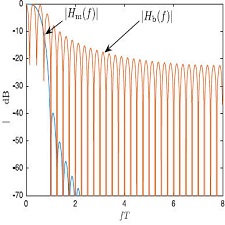توضیحات
ABSTRACT
Why has OEHHA developed a new health advisory for fish from the Clear Lake and Cache Creek watersheds? A fish consumption advisory was issued for Clear Lake in 1987. Since that time, many more samples of fish have been collected as part of studies on mercury contamination in the Clear Lake and Cache Creek atersheds. The Office of Environmental Health Hazard Assessment (OEHHA) used the information from these studies to update the advisory for Clear Lake and develop new consumption guidelines that reflect current scientific information on mercury. Also, fish were tested for mercury from nearby Cache Creek and Bear Creek. OEHHA used these results to develop guidelines for sport fish consumption from these water bodies as well. One set of guidelines applies to women of childbearing age and children age 17 years and younger, who are particularly sensitive to methylmercury (the most prevalent form of mercury in fish). A second set applies to women beyond their childbearing years and men.
INTRODUCTION
Why is mercury found in fish from this region? Mercury contamination in fish is a global problem. Emissions from volcanoes and coal-burning power plants release mercury into the air, where it can be carried worldwide before being deposited into oceans, lakes and reservoirs. In northern California, however, the presence of mercury in fish is largely a legacy of mining. The Clear Lake area is rich in mineral deposits, including cinnabar. Prospecting for mercury and other ores has been an important activity in the area since the mid-1800s. Mercury from natural weathering and mercurycontaining waste from the mines can contaminate nearby water bodies. Also, geothermal springs venting directly into Clear Lake or draining into Cache Creek and Bear Creek can carry mercury. Once mercury accumulates in bottom sediments, bacteria convert the inorganic form of mercury into a more toxic, organic form known as methylmercury, which fish take in from their diet. Methylmercury can build up in fish to concentrations many thousands of times greater than mercury levels in the surrounding water. Because methylmercury accumulates in fish slowly over time, larger fish of a species usually have higher concentrations of methylmercury than smaller fish from the same water body. Predators of large fish, such as bass, tend to have higher levels of methylmercury than other fish, such as trout.
چکیده
چرا OEHHA یک مشاور بهداشتی جدید برای ماهی ها از حوزه های Clear Lake و Cache Creek توسعه داده است؟ مشاوره در مورد مصرف ماهی برای Clear Lake در سال 1987 صادر شد. از آن زمان، نمونه های بسیاری از ماهی ها به عنوان بخشی از مطالعات مربوط به آلودگی جیوه در دریاچه های Clear Lake و Cache Creek جمع آوری شده است. دفتر ارزیابی خطرات بهداشت محیط (OEHHA) اطلاعاتی از این مطالعات را برای به روز رسانی مشاوره ای برای Clear Lake و ایجاد دستورالعمل های مصرف جدید برای نشان دادن اطلاعات موجود در جیوه استفاده کرد. همچنین ماهی برای جیوه از نزدیکی Cache Creek و Bear Creek مورد آزمایش قرار گرفت. OEHHA از این نتایج برای ایجاد دستورالعمل برای مصرف ماهی های ماهی ورزشی از این آبها استفاده کرد. یک مجموعه از دستورالعمل ها در مورد زنان سن باروری و کودکان 17 سال و جوانتر که مخصوصا در مورد متیل کربن (شایع ترین شکل جیوه در ماهی) حساس هستند، اعمال می شود. مجموعه دوم در مورد زنان بیش از فرزندان سالهای خود و مردان است.
مقدمه
چرا جیوه در ماهی این منطقه یافت می شود؟ آلودگی جیوه در ماهی یک مشکل جهانی است. انتشار گازهای آتشفشانی و نیروگاه های سوخت زغال سنگ، جیوه را به هوا منتقل می کنند، جایی که می توان آن را در سرتاسر جهان حمل و نقل کرد تا در اقیانوس ها، دریاچه ها و مخازن ذخیره شود. با این حال، در شمال کالیفرنیا، حضور جیوه در ماهی عمدتا یک میراث معدنی است. منطقه مرجانی دریاچه غنی از ذخایر معدنی، از جمله شمع است. از اواسط دهه 1800، جستجوی جیوه و سایر سنگ های معدنی فعالیت مهمی در این منطقه صورت گرفته است. جیوه از هوای طبیعی و زباله های جیوه از معادن می تواند آبهای مجاور را آلوده کند. همچنین، چشمه های زمین گرمایی به طور مستقیم به دریاچه Clear و یا تخلیه به Cache Creek و Bear Creek می توانند جیوه را حمل کنند. هنگامی که جیوه در رسوبات پایین تجمع پیدا می کند، باکتری ها فرم معدنی جیوه را تبدیل به یک ماده سمی تر و ارگانیک به نام متیل جلبک می کند که ماهی ها از رژیم غذایی خود استفاده می کنند. متیل کرکوری می تواند در ماهی به مقدار زیادی هزاران برابر بیشتر از میزان جیوه در آب های اطراف تولید کند. از آنجا که متیل کربن در ماهی به طور آهسته در طول زمان تجمع می یابد، ماهی های بزرگتر از یک گونه معمولا دارای غلظت های بالاتری از متیل کربن هستند نسبت به ماهی های کوچکتر از آب بدن. شکارچیان ماهی های بزرگ، مانند باس، تمایل دارند سطوح بالاتر از متیل کربن را نسبت به ماهی های دیگر مانند ماهی قزل آلا داشته باشند.
Year: 2005
Publisher : OEHHA
By : California Environmental Protection Agency
File Information: English Language/ 2 Page / size: 106 KB
Only site members can download free of charge after registering and adding to the cart
سال : 1384
ناشر : OEHHA
کاری از : آژانس حفاظت محیط زیست کالیفرنیا
اطلاعات فایل : زبان انگلیسی / 2 صفحه / حجم : KB 106


![Health Advisory for Fish and Shellfish[taliem.ir]](https://taliem.ir/wp-content/uploads/Health-Advisory-for-Fish-and-Shellfishtaliem.ir_.jpg)





![Environmental, Health, and Safety Guidelines for[taliem.ir]](https://taliem.ir/wp-content/uploads/Environmental-Health-and-Safety-Guidelines-fortaliem.ir_-150x150.jpg)
![GUIDELINES FOR CONSUMPTION OF FISH AND[taliem.ir]](https://taliem.ir/wp-content/uploads/GUIDELINES-FOR-CONSUMPTION-OF-FISH-ANDtaliem.ir_-150x150.jpg)
نقد و بررسیها
هنوز بررسیای ثبت نشده است.